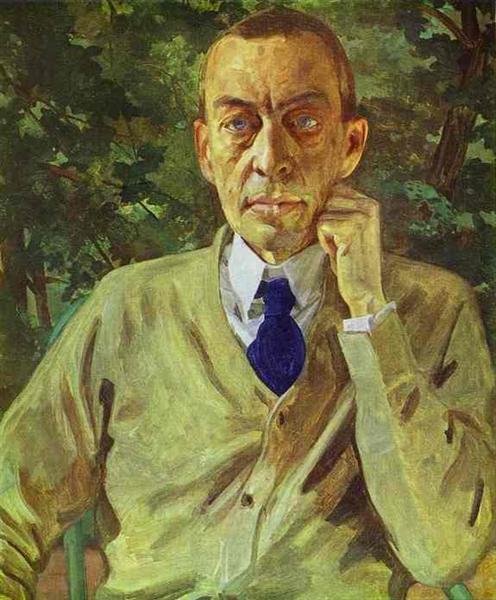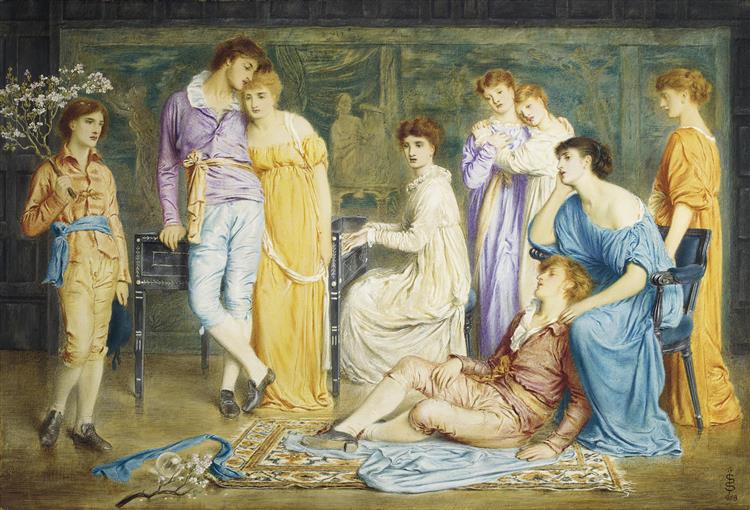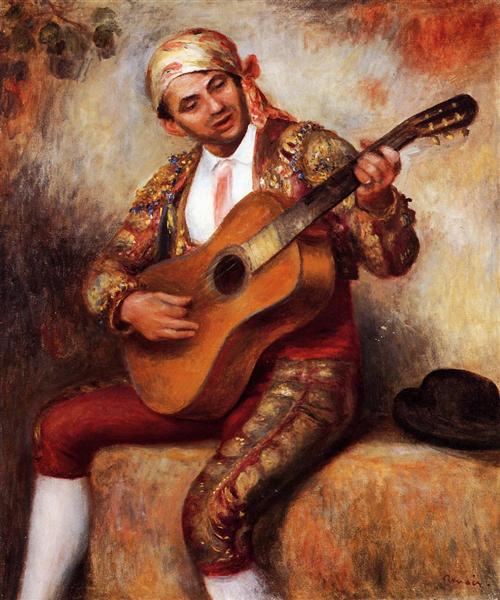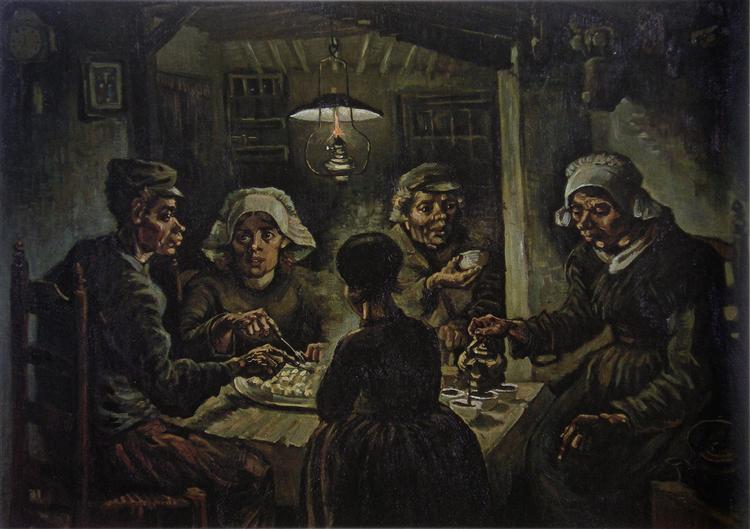Just another WordPress.com weblog
Category: Debussy
________
what struck me most about Schubert’s Piano than its emotional impact, its technical wizardry, from the start Schubert dazzles with his prestidigitation, his manual dexterity, the notes fly
working against the beat, apart from the fourth movement, the rondo, Schubert is being unequivocally Beethoven
the fourth movement is, incidentally, utter Mozart, you can tell from the preponderance of trills texture, meanwhile, overcoming melody, in, most notably, the third movement, is right out of Chopin, his “ Winter Winds for instance, an inspired combination of both melody and texture, where is the supremacy of either, listen me, do the “Winds conquer the groans, the tribulations, of the underlying melody, the left hand, the low notes, the chthonic, the earth, or does the dexterousness of the right hand, the ephemeral, the transitory, win the day
texture will overcome melody eventually, as the century moves along, Impressionism will prioritize perspective over emotion, the head over the heart, Debussy, among others, Renoir, Monet, Pissaro, will dominate, see above story meanwhile Schubert R ! chard
______ a sonata can be written for any instrument, some just more prevalent than others, here’s one for clarinet, Brahms’ Opus 120, after the distortions of later composers you might remember from these pages, it’s nearly quaint to return to the traditional templates for the sonata, more than one movement, no more than two instruments, and attention to the Classical imperatives of tempo, tonality, and repetition Brahms doesn’t put a foot wrong, all of the requirements are observed punctiliously, you could even sing or dance to this music, something you couldn’t later do, unless with choreography, see, for instance, Nijinsky talking about Nijinsky, the clarinetist here is as feral as the faun Nijinsky version , in his homage to Debussy’s The Afternoon of a Faun, 1912, he even seems, the clarinetist, the very god Pan, come down from Olympus to frequent the backwoods of Ionia, to beguile those who would be beguiled, with his flute, see above his accompanist is equally hot R ! chard
_____ if I object to sonatas consisting of only one movement, I can also object to sonatas consisting of more than two instruments, but here’s Debussy’s which should more accurately have been called a trio, a trio is a sonata with three instruments note also in the Debussy the breakdown of all the Classical imperatives, tempo, tonality, and repetition, another blow to established authority but the test is, does it work, at which point, if it does, terminology becomes moot, and meaning changes today, I pondered the word love, its myriad meanings, and how we still call that infinite variety of emotions the same thing, the word sonata doesn’t hold a candle to the word love for disinformation I thought, okay, just make it work, I’ll define it for myself later, each one of us being the final arbiter of our own aesthetic sensibility the question R ! chard
_______ at the end of the Nineteenth Century, a a seismic shift occurred in our Western culture’s sensitivity to art much as visual representation during the Renaissance and up until the late Baroque Period had dominated, to be replaced by music during the Classical Age as the sensory temperature of the times, visual representation once again took over as arbiter of Western sensibility during Impressionism you’ll remember the artists of the Renaissance, but not many of the composers, you’ll be able to name the composers of the Classical Age and the Romantic, but not many, if any, of the painters, you’ll then immediately toss off a list of artists of the Impressionist Era, but not many of its composers this lasts till, I’d say, Andy Warhol, when the visual arts still held sway, but the present is, it seems, up for grabs here’s meanwhile, an Impressionist, an obvious Impressionist statement, to be compared, incidentally, with its Romantic counterpart, Beethoven’s enjoy R ! chard
______ though you probably still wouldn’t be able to tell a prelude from a hole in the wall, nor, admittedly, can I, unless indicated, if you’ve listened to the pieces I’ve recently presented, you’ve noted, even merely sensed, really, that the preludes of one composer don’t sound at all like those of the others, Bach doesn’t sound like Chopin, who doesn’t sound at all like Debussy, the first step in telling your Beethoven from your Bach, as promised in my title you might not even be able to tell which is which as you’re listening, but you can tell they’re different, you do the same thing telling your Monet Rachmaninov also wrote, like Chopin, and Debussy, 24 preludes, and, like Chopin, in every key, major and minor
but spread out through three publications, only one prelude, but a scorcher, The Bells of Moscow listen
a second set, Opus 23 ten,
mostly iconic, pieces, you’ve heard them somewhere before, therefore iconic the final set comes out in 1910, Opus 32
for a total of 24 enjoy
R ! chard
__________
what’s a prelude
as the word suggests – pre, from the Latin, means before, lūdus, again from the Latin, means game, play, spectacle – it is a piece of music that precedes another more elaborate segment in a compositional whole a prelude is therefore likely to be short, otherwise completely improvisatory, no technical demands, just something that comes from the heart there probably existed preludes before Bach, but he’s the one who put them on the map, with, specifically, his monumental Preludes and Fugues, though that’s another story, more about which later, but he did write some stand-alone preludes, for a little over a hundred years later, in 1834, Chopin picked up the mantle and wrote his own iconic Opus 28 one for every major and minor key, and established thereby the prelude as a viable musical form nearly a hundred years later still, Debussy set up his own homage to Chopin, in two bursts of inspired composition, the twelve preludes of his Book 1 by his Book 2 , again of twelve preludes, written in 1912 to 1913 these works are now generally played in complete sets, though they often pop up individually as short and sweet encores here and there at the end of successful recitals enjoy R ! chard
____________
just as I was about to relegate the trill to Mozart and the Classical Period, I inadvertently came upon something Spanish composer, 1901 – 1999, a
the trill had been decorative, meant to appeal to aristocrats frequenting salons then the French Revolution happened, and the growth of the Middle Class, and consequently popular avenues of entertainment for the liberated, concert halls, for instance, looked for a more emotionally powerful experience, arpeggios took care of that
the trill died but in 1939, nearly two centuries homage to an elder, trills abound it should be stated that a guitar can play only one note at a time, it might be that trills lend themselves better to such an instrument than an arpeggio would then again, I’ve found that Spanish music, the tango, the tarantella, for instance, see above has held more rigidly to the imperatives of Western music I’ve spoken of here before, tempo, tonality, repetition, it is not Debussy, Ravel, it is not even Chopin, it is peripheral, maybe, to the cultural establishment, but potent, steeped in blood and tradition R ! chard
___________ where do you start with Chopin, he is in our Western cultural bloodstream, as identifiable in music as, say, van Gogh is in painting, you don’t need to be interested in any kind of art to have not been given even only a whiff of these iconic artists nearly anything I might present here of Chopin you’ve probably already heard somewhere before, if only in bits of van Gogh, well, he goes back in the public imagination to at least doesn’t know about him, when I heard it playing in Amsterdam at the museum, with the first piece I the first wall, insisting on van Gogh’s vision, his prophecy, his profound compassion, I cried, I understood Chopin exerts a different kind of, however equally potent, magic Mozart might sound like Haydn, Beethoven might sound like Schubert, all of the Impressionists sound like all of the Impressionists, be they Ravel, Debussy, Satie, or Saint-Saëns, to the untrained ear but no one sounds like Chopin, he’s, culturally, a North Star in English, a study, a finger exercise, an iconic, here to get your categories going consider its construction, having some information already about fantasias, a work of the imagination , open to any experimentation within the confines of one movement, with an impromptu, something purported to have been created on the spot, also in one movement the answer requires you to sharpen your aesthetic pencil, always a delight – an impromptu, a spontaneous invention, a fantaisie, a work of the imagination, how do they differ, which part is a fantaisie, which an impromptu, how do they nevertheless coalesce this exercise is the first step in listening enjoy R ! chard
________ to take a break, for a moment, from the travails of Io , a heifer still, though her father, Inachus , is aware of the situation, and Hermes , messenger of the gods, is to save her, and, at the same time, inspired by the music Hermes tells Argus , her many-eyed keeper, Pan , god of the wilds, has been playing, with reeds he’s been left with of Syrinx , the nymph he would’ve loved had she not been transformed into rushes, as imagined by Debussy in his evocative Syrinx I could not not remember Debussy ‘s other similarly mythological, and intimately Nijinsky , legendary dancer and choreographer, into an event that verily shook the early 20th Century performance captures everything one would gather from Ovid’s myths of its primitive, primal, sensibilities the faun, needless to say, is representative of Pan , god of the wild, woodlands, a satyr, part instinct, part man, see above celebrated successor, take on the role Nijinsky made famous, without any alterations made to the original 1912 production, however improbably, though entirely successfully, we’re in Paris, May 29, though transposed, faithfully and superbly, to New York, Broadway, 1979 proceed, however, at your own discretion, about what happens when a young buck’s fancies, implacable and irrepressible, turn to love, not for the scrupulous, where does love begin, it asks, and lust retire, or is it the other way around, where does yin, in other words, meet, become, yang these are questions that more and more begin to come up, you’ll find, in Greek and Roman, and most other ancient, for that matter, mythologies, something that isn’t at all touched upon in the Judaism, monotheistic, though they’re at least as old, where nature, the place of animals, vegetation, land, water, our intimate interconnection with them, don’t much, for better or for worse, come up I miss the wonder of the more pantheistic, the pagan, perspective R ! chard
__________ Then Hermes thus: Hermes , messenger of the gods,addresses Argus , keeper of Io , who’s been transformed by Jove , god of gods, into a heifer, though she remains daughter, ever, of Inachus , river god, to tell the story of his rare, beguiling reeds A nymph of late there was Whose heav’nly form her fellows did surpass. here we go again with nymphs, beautiful, irresistible, however ever innocent, prey, due, indeed, to their very beauty, their very innocence, to lustful, inordinate desires, in these instances, markedly divine deities, I point out again, make up their own rules The pride and joy of fair Arcadia’s plains, Arcadia , apart from being an actual area of Greece, is also the ideal , in our historical much as is the lost island of Belov’d by deities, ador’d by swains: Syrinx her name, by Sylvans oft pursu’d, Sylvans, could only be, thoughI’ve been unable to find actual confirmation of my opinion, wood spirits, forest entities, satyrs, goat men, and such As oft she did the lustful Gods delude: Syrinx could often, or oft, delude, or fool, ward off, the lustful Gods The rural, and the woodland Pow’rs disdain’d; satyr yourself, Syrinx would’ve impudently taunted With Cynthia hunted, and her rites maintain’d: Like Phoebe clad, even Phoebe’s self she seems, as Diana , goddess of the Hunt, you’ll connection to Daphne , who earlier here was transformed into a laurel Syrinx sounds an awful lot, incidentally, like another version of Daphne So tall, so streight, such well-proportion’d limbs: The nicest eye did no distinction know, But that the goddess bore a golden bow: the only difference between Syrinx that Syrinx didn’t have, bear, a golden bow Distinguish’d thus, the sight she cheated too. had she borne a golden bow, Syrinx , [d]istinguish’d thus, would’ve cheated the sight, looked identical, to the beautiful, it is inferred, goddess Descending from Lycaeus, Pan admires The matchless nymph, and burns with new desires. Pan , god of the wild, woodlands is a mountain in Arcadia A crown of pine upon his head he wore; And thus began her pity to implore. But e’er he thus began, she took her flight So swift, she was already out of sight. Nor stay’d to hear the courtship of the God; But bent her course to Ladon’s gentle flood: flood, rushing, though gentl[y], water, rhymes in the preceding verse, you’ll note, with God There by the river stopt, and tir’d before; Relief from water nymphs her pray’rs implore. Syrinx , once by the river stopt, seeks the help of, assistance, [r]elief from, the nearby water nymphs, her consorts Now while the lustful God, with speedy pace, Just thought to strain her in a strict embrace, is, as well, and characteristically, a lustful God He fill’d his arms with reeds, new rising on the place. And while he sighs, his ill success to find, his ill success, his thwarted, ineffective, enterprise The tender canes were shaken by the wind; And breath’d a mournful air, unheard before; the reeds that Pan gathered in his arms, shaken by the wind, create a mournful air, a melancholy music That much surprizing Pan, yet pleas’d him more. though Pan might’ve been much surpriz[ed] by the sorrowful sounds he heard, he was more pleas’d by them than startled Admiring this new musick, Thou, he said, Who canst not be the partner of my bed, At least shall be the confort of my mind: And often, often to my lips be joyn’d. in a kiss of consolation He form’d the reeds, proportion’d as they are, Unequal in their length, and wax’d with care, They still retain the name of his ungrateful fair. the instrument Pan devised from the tender canes he fashioned from the unaccommodating reeds, what we now name the Pan flute , was called in Ancient Greece a syrinx, in honour of the recalcitrant nymph however, which is to say, on a long ago abandoned at a professional level the original pipe, though it remains, apparently, as a folk instrument in more agrarian, communities around the world, for shepherds, one would imagine, to while away the hours while tending to their, however wayward, sheep R ! chard






